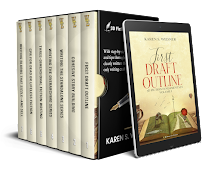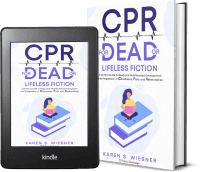In a presentation on Dark Lords at this year's ICFA, the author of the paper raised the question of whether villains need a complex backstory for their motivations to make them credible as characters. The author didn't think so. He pointed out that a villain can have a realistic but simple, straightforward motive. He mentioned Wile E. Coyote, who just wants to eat the roadrunner. Granted, that original goal has apparently been complicated by feelings of frustration, with a competitive drive to prove a silly bird can't get the better of him. Nevertheless, I admit appetite or greed can be a sufficient motive by itself. A bank robber or a pirate can serve as a believable antagonist if he simply wants the loot. But what about a Dark Lord (or Lady) or other supervillain?
Hannibal Lecter in SILENCE OF THE LAMBS offers an interesting example. He's a highly educated, brilliant, cultured, insightful psychiatrist who, as a villain, doesn't display particularly complicated motives. He's a sociopath who has fun manipulating people and, incidentally, likes to indulge his cannibalistic fetish. When HANNIBAL and HANNIBAL RISING gave him a backstory with what TV Tropes calls a "Freudian excuse," he underwent a fundamental change that subverted his portrayal in RED DRAGON and SILENCE OF THE LAMBS as an enigmatic, not-quite-human monster.
The Star Wars series, in my opinion, made Darth Vader more interesting by giving him a backstory to explain how the heroic Jedi warrior Anakin Skywalker became Vader, even though I think it falls short to some extent. Pre-Vader Anakin, to me, doesn't come across as a very engaging character. He grows from a rather nice kid into a whiny teenager, something of a disappointment as a future Dark Lord. And I never quite believed in his romance with the princess in the prequel trilogy. I found both characters more believable and engaging in the midquel animated series. Still, the prequel trilogy does give Anakin credible motives for turning to the Dark Side. The most prominent current example of a sympathetic villainous backstory is, of course, WICKED. It's been a long time since I've read the book, so I don't recall many details, but the movie (part one of Elphaba's story) does a wonderful job of showing the future Wicked Witch of the West as a misunderstood person who starts out good and is driven to the rebellion that gets her labeled as "wicked."
If a writer wants me to believe in a villain impelled by greed for limitless wealth or domination, I need to know more about him or her, because I can't identify with such motives. One can spend only so much money in a lifetime. As for ruling the world, why would anybody go to all that trouble? Such an antagonist, in my opinion, would be improved by a backstory to explain why he or she feels nothing will ever be enough. Otherwise, they remind me of a supervillain organization in an old cartoon series (I don't remember what) whose goal was "to destroy the universe for their own gain."
Lord Voldemort's drive to conquer wizard society in the Harry Potter series has credible roots in his bitterness about his Muggle father and his "weak" witch mother's death and, above all, his own terror of death. Fundamentally, all his actions spring from his obsession with attaining immortality.
Revenge is another motive for which I take some extra convincing. I've used it myself in my vampire novel CHILD OF TWILIGHT (direct sequel to DARK CHANGELING, although I think it could stand alone), but I consider it plausible only because the antagonist has been in suspended animation for the whole time since the event she's avenging -- the death of her brother. Therefore, her grief and rage are as fresh as if the death happened yesterday, not thirteen or so years in the past. I can imagine striking out in rage against an enemy at the moment I'm attacked or soon afterward. I can't empathize with the "revenge best served cold" philosophy. Spend years or decades brooding over an injury and plotting a complicated vengeance? What a waste of time and energy. So the avenger needs well-developed personality traits that make his readiness to act this way plausible.
One archetypal villain has generated much speculation over his motive in the past two millennia -- Judas Iscariot. "He did it for the money" is not convincing. As Dorothy Sayers explains in her commentary on THE MAN BORN TO BE KING, her twelve-part radio drama series about the life of Christ, Jesus as portrayed in the Gospels (who "knew what was in people") wouldn't have chosen an obvious crook as a member of His inner circle. Nor would He deliberately choose a villain for the explicit purpose of setting him up to damn himself by turning traitor. As Sayers points out, neither of those scenarios would make a convincing story. Judas must have begun as a loyal disciple and undergone a change that made him decide betraying Jesus was right. Two principal motivations have been proposed: (1) Judas wanted Jesus to lead a military revolt against the Roman occupation and thought being arrested would goad Him into taking that route. (2) Afraid Jesus' public actions were putting all of them in grave danger from the Jewish and/or Roman authorities, Judas hoped being arrested would frighten Jesus into behaving more cautiously. Dorothy Sayers's own explanation for the betrayal takes a third tack: Judas mistakenly thought Jesus was plotting violent revolution, became disillusioned, and betrayed Him to stop the nonexistent uprising.
The topic of supervillains always reminds me of the Evil Overlord list, which you may have read, an exhaustive catalog of things a sensible Dark Lord should or shouldn't do. It's a hilarious deconstruction of all the familiar villainous tropes and cliches:
Evil Overlord ListMargaret L. Carter
Please explore love among the monsters at Carter's Crypt.



































